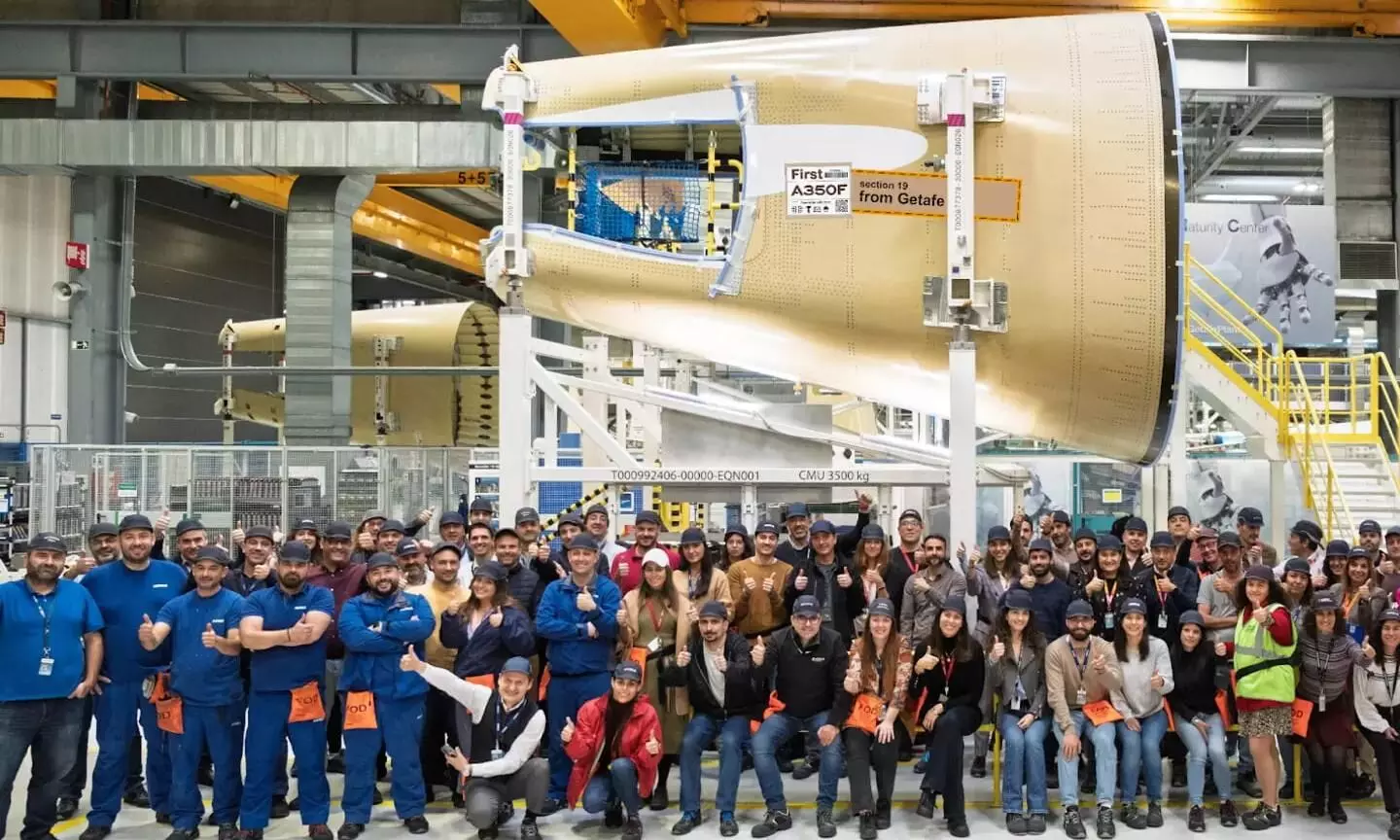
Airbus ships first A350F Section 19 to Hamburg
Section 19 is specifically adapted for the A350F, featuring a protector on its underside to prevent damage during ground operations

The first A350F Section 19, completed in November in Getafe, has been transported to Hamburg aboard the Beluga, marking a significant milestone in the production of the new freighter, according to an official release from Airbus.
This initial shipment to Hamburg marks the beginning of a series, establishing Getafe as a key centre for A350F production.
Initiated in 2022, the project involved developing a new workstation and fostering close collaboration between multiple teams and departments to ensure a smooth implementation. Section 19 is specifically adapted for the A350F, featuring a protector on its underside to prevent damage during ground operations, mentions the official release.
“Although the protector may seem simple, fitting it required a reorganisation of the line, ensuring we met the highest quality standards without interfering with the production of other aircraft,” says Isabel Nieto, Value Stream Mapping Project Manager at Getafe.
The technical solution was developed in collaboration with several specialised teams.
Manuel García, Head of A350F Engineering, explains: “The modification is designed to protect the aircraft from unexpected roll during loading. The challenge was to achieve an airworthy, aerodynamically effective and easy to maintain system, with test-validated structural protection to minimise in-service damage.”
“Cargo aircraft must be held in place by the rear on loading and unloading,” adds Carlos Sancho, Development Programme Head. “For this reason, the A350F is fitted with an in-flight adapter that secures the aircraft to the ground, speeding up loading and unloading.”
From the outset, alternatives were assessed to integrate these modifications without disrupting the production of passenger A350 aircraft. Ultimately, a solution was chosen that keeps the common production line intact until the final stage, when the freighter sections are redirected to a new station for the necessary modifications, the release added.
The keys to success
The Section 19 project involved close collaboration between the members of the Multi Functional Team. Txema Santiago, Manufacturing Engineering Process Engineer, explains that “it was an exercise against the clock that required the coordinated effort of everyone.”
“The involvement of the production team was fundamental right from the start, helping to define processes and anticipate and solve problems before they arose. The commitment from the shop floor has been exceptional,” says Iván Ramos, Line 3 S19 A350 Production Manager. “Not only have they been involved in the development, but they have also taken the initiative to continuously improve operations.”
Paving the way for the future
The implementation involved several key milestones, including Process Failure Modes and Effects Analysis (PFMEA), Industrial Process Acceptance Reviews (IPAR), and the First Implementation Check (FIC). These steps allowed the entire project to be visualised and all modifications to be reviewed, ensuring the equipment's readiness for production, the release added.
“This change, although it may seem minor, involves a lot of effort and guarantees the operational safety of the aircraft,” says Sancho.
“This project has strengthened us as a team. We have shown that, with the right preparation and effective communication, there is no challenge we cannot overcome,” Ramos concludes.
Airbus has already started producing critical components and tools for the A350F.
Due to supply chain challenges, especially with U.S. supplier Spirit AeroSystems, Airbus now anticipates the A350F will enter service in late 2027.
As of January 2025, Airbus has received a total of 63 A350F orders.

